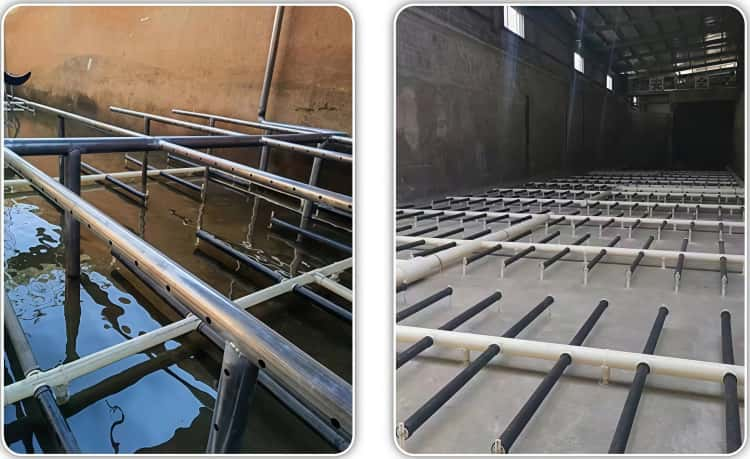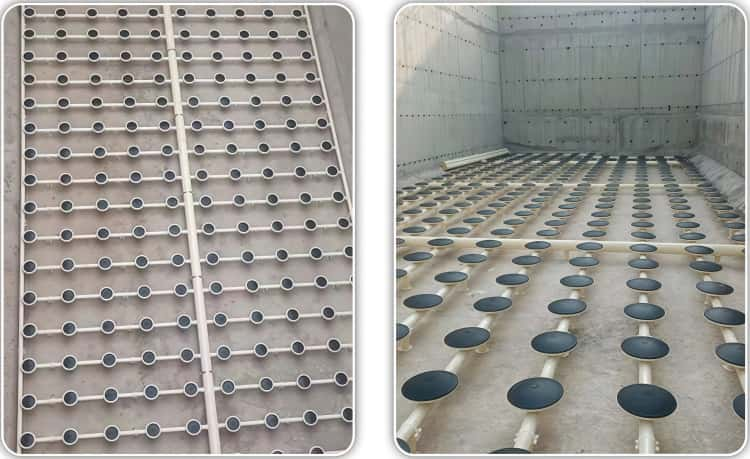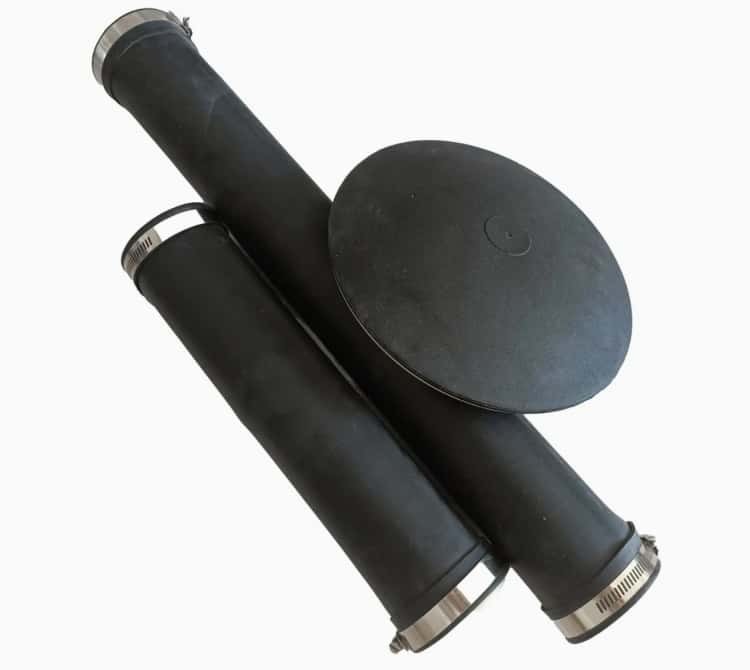Bubble diffusers are essential components in modern wastewater treatment systems. Their primary function is to disperse air into water in the form of bubbles, increasing the contact surface between oxygen and water. This enhances oxygen transfer efficiency and supports biological processes critical to wastewater treatment.
In submerged aeration systems, bubble diffusers are the most common method for delivering oxygen. By converting air from its gaseous form into fine or coarse bubbles within the liquid, they optimize oxygen absorption. The type and performance of a bubble diffuser directly affect the system’s energy usage and treatment results.
Types of Bubble Diffusers
There are several types of bubble diffusers, each offering distinct advantages depending on system requirements and water quality conditions. They are typically categorized by the size of the bubbles they produce and their structural design.
1. Fine Bubble Tube Diffusers
Fine bubble tube diffusers are long cylindrical components typically made from high-quality EPDM, silicone, or other elastic membranes. These bubble diffusers generate bubbles that are typically 1–3 mm in diameter. This small size increases the surface area of the bubbles, maximizing oxygen transfer.

Advantages of Fine Bubble Tube Diffusers:
- Made using bimodal molecular weight EPDM to reduce ventilation resistance by 20%.
- High tear strength, elasticity, and deformation resistance.
- Utilize platinum-cured hydrosilylation vulcanization for improved mechanical properties and stable pressure response.
- Designed with anti-clogging hydrophobic material, reducing dirt adhesion and ensuring long-term performance (up to 8 years without clogging).
- Oil-free formulation prevents elasticity decay (less than 20% in 5 years), increases crosslink density, and resists deformation.
These bubble diffusers are ideal for continuous biological aeration and compatible with a wide range of tank shapes and sizes.
2. Fine Bubble Disc Diffusers
fine bubble disc diffusers are flat, disc-shaped units installed at the bottom of aeration tanks. They feature micro-perforated membranes that create uniform and stable fine bubbles.

Benefits of Fine Bubble Disc Diffusers:
- Efficient oxygen transfer.
- Consistent and energy-saving air distribution.
- Easy installation and low maintenance.
- Suitable for retrofitting or precision aeration systems.
These bubble diffusers are especially effective in tanks that require uniform oxygen dispersion and low energy consumption.
3. Coarse Bubble Disc Diffusers
Coarse bubble disc diffusers also have a disc design but produce significantly larger bubbles, typically over 4 mm in diameter. While they offer lower oxygen transfer efficiency, they excel in mixing and agitation.
Advantages of Coarse Bubble Diffusers:
- Larger bubble size ensures strong mixing action.
- Resistant to clogging and fouling.
- Ideal for wastewater with high solid or grease content.
- Preferred for secondary treatment processes where floc and sediment can block fine diffusers.
These bubble diffusers are durable and reliable for harsh environments.
Bubble Diffuser Comparison Table
| Type | Bubble Size | Oxygen Transfer Efficiency | Ideal Use | Key Advantages |
|---|---|---|---|---|
| Fine Bubble Tube | 1–3 mm | High | Biological treatment systems | Flexible, high-efficiency, anti-clogging |
| Fine Bubble Disc | 1–3 mm | High | Tank bottom aeration | Uniform air flow, energy-saving, easy to install |
| Coarse Bubble Disc | >4 mm | Lower | High-solid, oily wastewater | Strong mixing, clog-resistant, durable |
Conclusion
Choosing the right bubble diffusers is crucial to optimizing aeration performance and minimizing energy consumption. Fine bubble diffusers provide higher oxygen transfer efficiency and are ideal for biological treatment, while coarse bubble diffusers offer better durability and mixing capability in challenging conditions.
A properly selected bubble diffuser system enhances treatment outcomes, reduces maintenance costs, and ensures stable and efficient plant operation. For any wastewater treatment facility, investing in the right bubble diffuser technology is a step toward long-term sustainability and performance.
